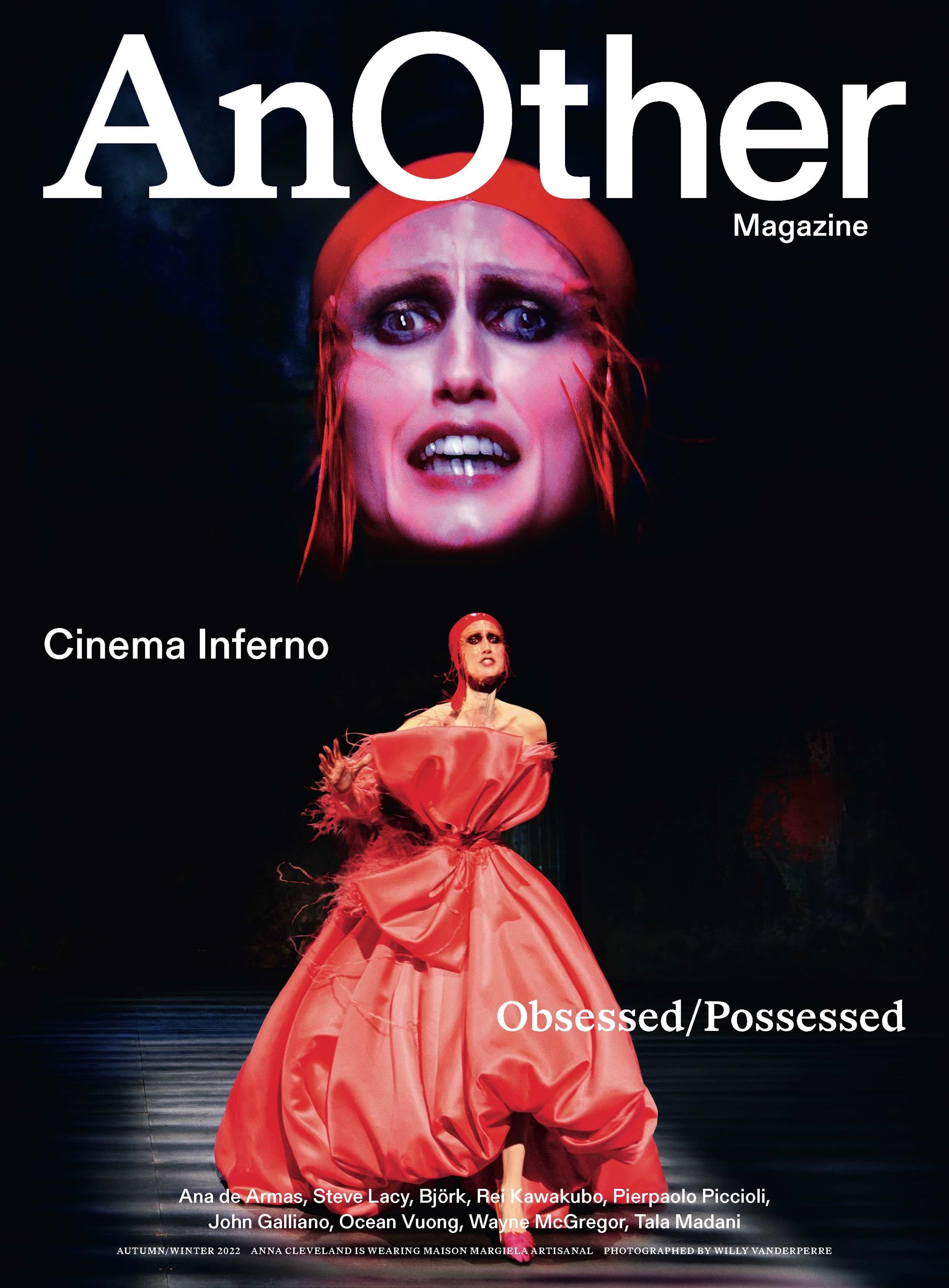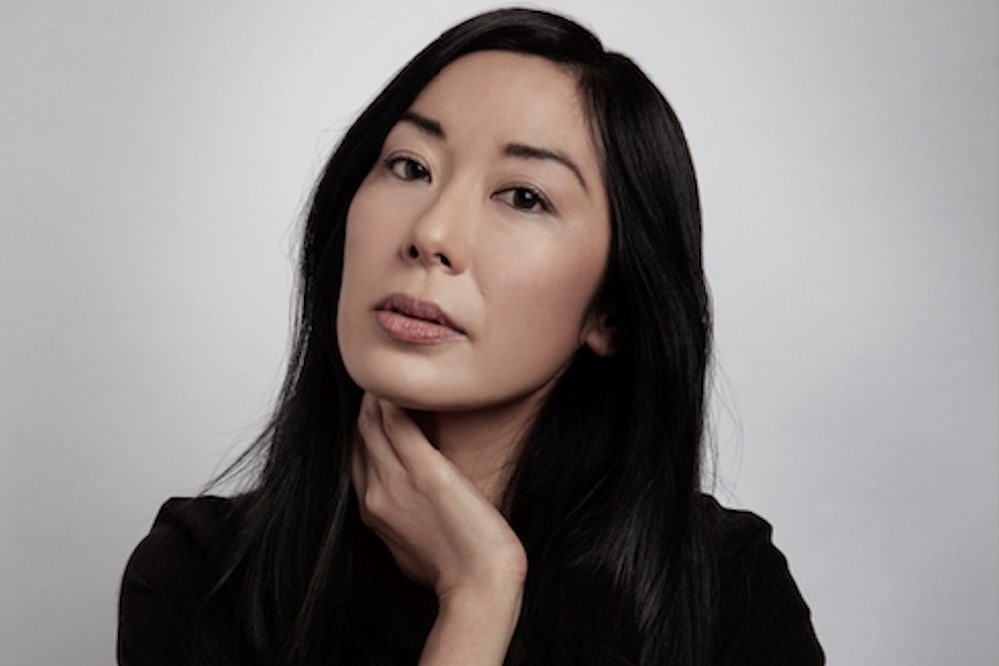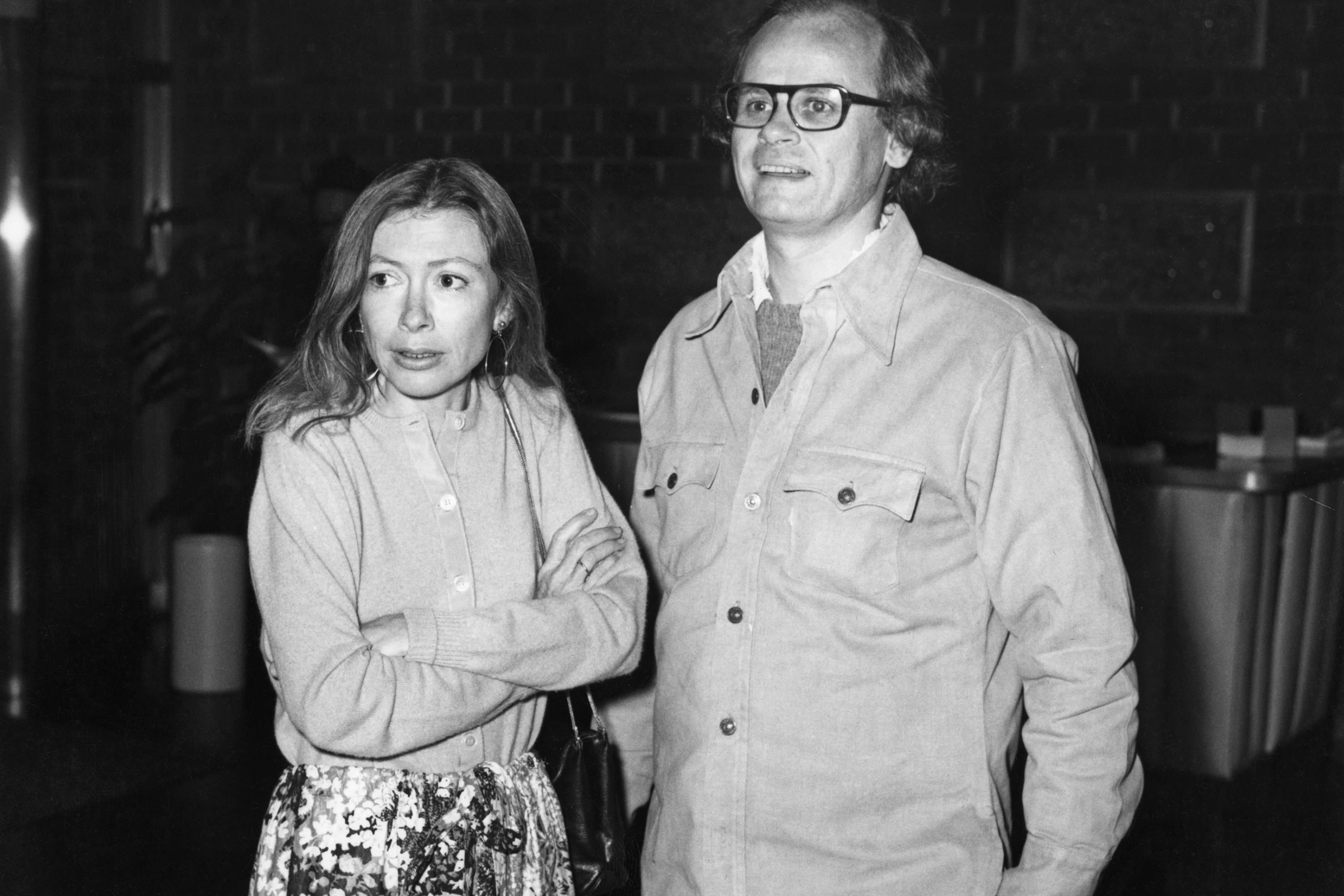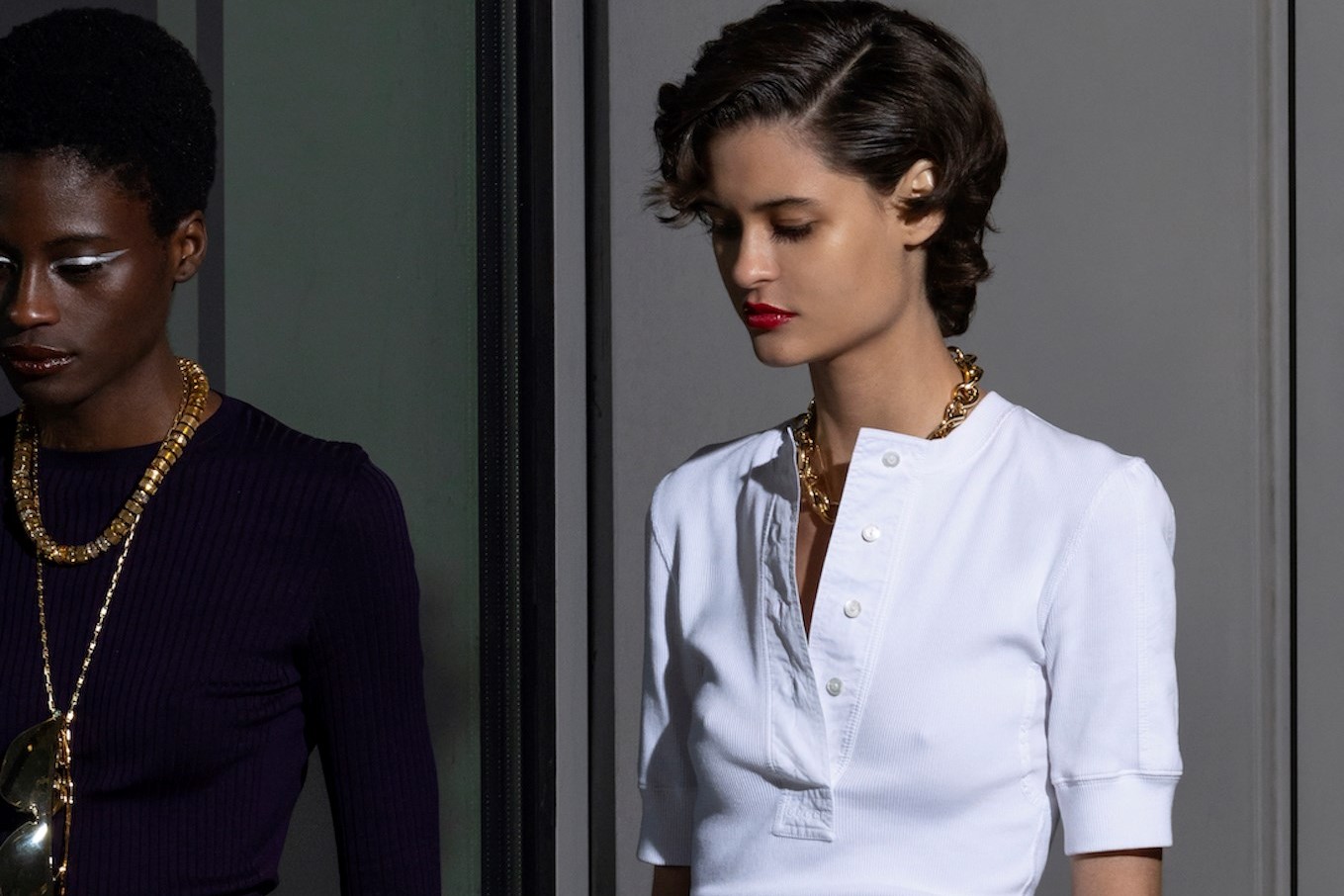This article is taken from the Autumn/Winter 2022 issue of AnOther Magazine:
Susannah Frankel: Why did you choose to show in this format? To stage a play?
John Galliano: I was listening to my instinct, Susannah. Following the lockdown period, which pushed us all to investigate the possibilities of digital formats, I sensed a profound desire for physicality. But after everything we experienced during the pandemic – our collective discoveries and evolvements – it didn’t seem relevant to return to a runway. I wanted to create a proposal informed by the investigations made through our filmic work with Olivier Dahan and Nick Knight, a multidisciplinary format that would reflect the connectivity for which we all hanker, whether we’re on the front row of a show or watching it on a screen. Cinema Inferno was my way of embracing the cultures of fashion, performance and the virtual world through a construct at once digital and physical. It transcended the traditions of a play, but because geography required a space in central Paris, we chose to present it in a theatre.
SF: In some ways, a theatre with an audience is a more extreme return to physicality than a traditional runway show. Was the idea a reaction to not having shown physically for more than two years?
JG: If it were a reaction to the events of the past two years, it was a yearning to stay on the path of exploration that the lockdown period instigated. It didn’t feel natural to ignore those discoveries and return to what we once knew. Leave those runway glasses – those one-way glasses – at the door. Theatre played a part in that transition, but my intention wasn’t simply to stage a play. With Cinema Inferno I wanted to embrace and unite many different cultures and formats and propose a different way of seeing. It was narrative storytelling presented on a stage and captured in film but revealing – and integrating – all the makings and mechanics of theatre and filmmaking in a way true to the genetics of Maison Margiela.
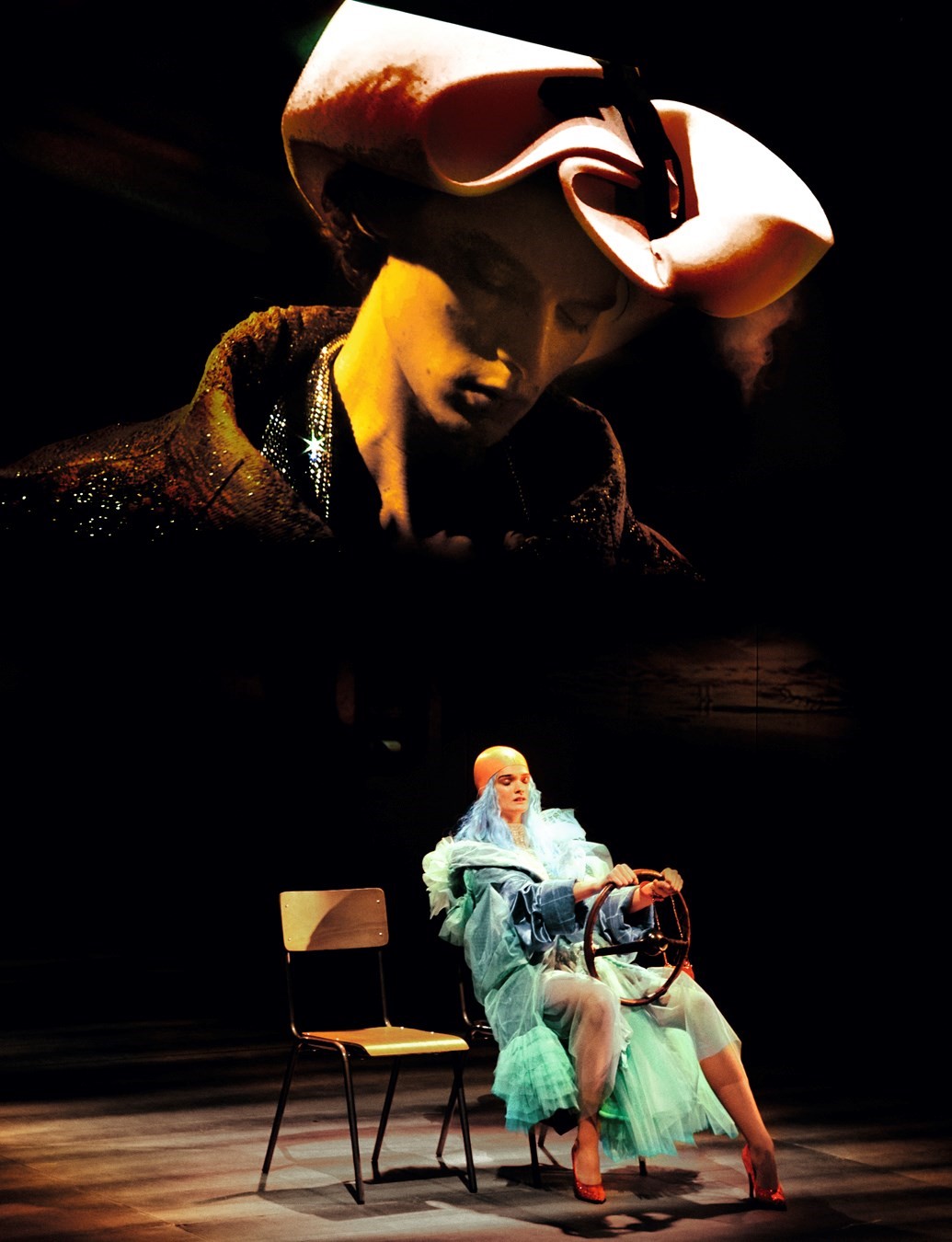
SF: Although at Margiela, on the runway, the theatre has principally been in the clothes. You have always been interested in a theatrical element and over the past two years you have worked with the narrative of film. Why does that interest you? Why, perhaps, is the traditional fashion-show format not enough?
JG: The two are in symbiosis. They have been intrinsically linked from the day I left school. More than a theatrical element, it is a narrative approach – a way of mapping out the soul of a collection to guide one’s clarity of vision. To me, it’s instinctive. Dressmaking is in dialogue with storytelling and the two invigorate each other. In the past, the narratives I’ve worked with have unfolded on the runway, but at this moment in time, I felt from my surroundings a longing for a greater connectivity.
SF: How did you decide to collaborate with the award-winning theatre company Imitating the Dog?
JG: Over the past year, Kevin Macdonald has been directing a documentary about me. During one of our conversations he mentioned Imitating the Dog. Shortly afterwards, Alexis [Roche, Galliano’s partner] and I found out that the troupe was staging Dracula in Schaffhausen [in northern Switzerland], so we immediately jumped on a plane to see it. I was taken by their approach, and shortly afterwards I met with [Imitating the Dog’s co-artistic director] Andrew Quick to discuss my early ideas for the Artisanal show. It evolved into nearly 12 months of development, with rehearsals in Leeds with the principal cast before we relocated to Paris with the full ensemble.
SF: People so often talk about a multidisciplinary approach to art and craft now. In some ways it characterises this age. How does the reach – and indeed any limitations – brought about by working in collaboration with artists from a different medium inspire you? Is it about employing a fresh approach to create something new?
JG: Fashion is driven by ideas and previously unexplored proposals, which are brought to life through collaborative efforts. Whether it’s the artisans in the ateliers, the muses, the hair and make-up teams, or the artists and craftspeople who help to build and frame those ideas, it is always inspiring to work with people with expertise different from your own.
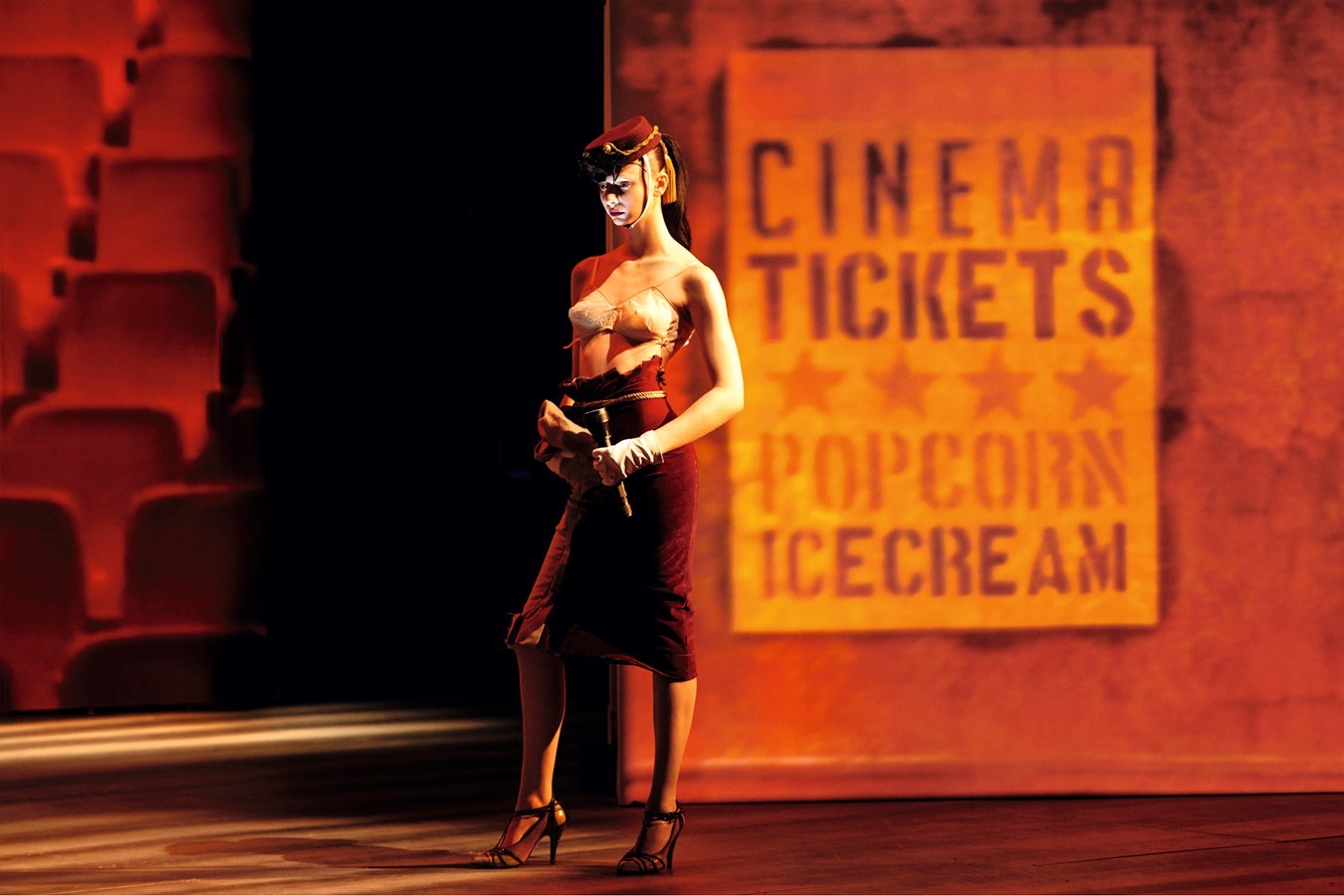
“In my process, I tap into emotions to create memories. It generates an intrinsic link between dressmaking and storytelling, which becomes the foundation for my approach to haute couture” – John Galliano
SF: There is something very new, too, about the seamless fusion of the elite – the limited number of people attending a fashion show or play – with the democratic, in other words showing to anyone who would like to watch online at the same time. How and why does that interest you?
JG: You always hope that all your audiences will be able to connect with what you create. This is what shapes the community that surrounds the maison, whether they’re sitting on the physical or virtual rows. In the digital age, footage from fashion shows new and old has become accessible with the tap of a finger. This evolution opens the doors to so many possibilities when it comes to formats and presentations. It’s something that invigorates me.
SF: How much does the story dictate the clothes and vice versa? Should clothes always tell a story?
JG: The story never dictates the clothes. In my process, I tap into emotions to create memories. It generates an intrinsic link between dressmaking and storytelling, which becomes the foundation for my approach to haute couture.
SF: And what is the story here?
JG: It is a story centred around the abuse of power. We follow our two protagonists, Hen and Count, who are on the run from events that are revealed to the audience through flashbacks and cinematic dream sequences. Each of these scenes portrays a different depiction of the abuse of power in patriarchal society, while also touching on experiences, emotions and situations rooted in fundamental fears we all can relate to.
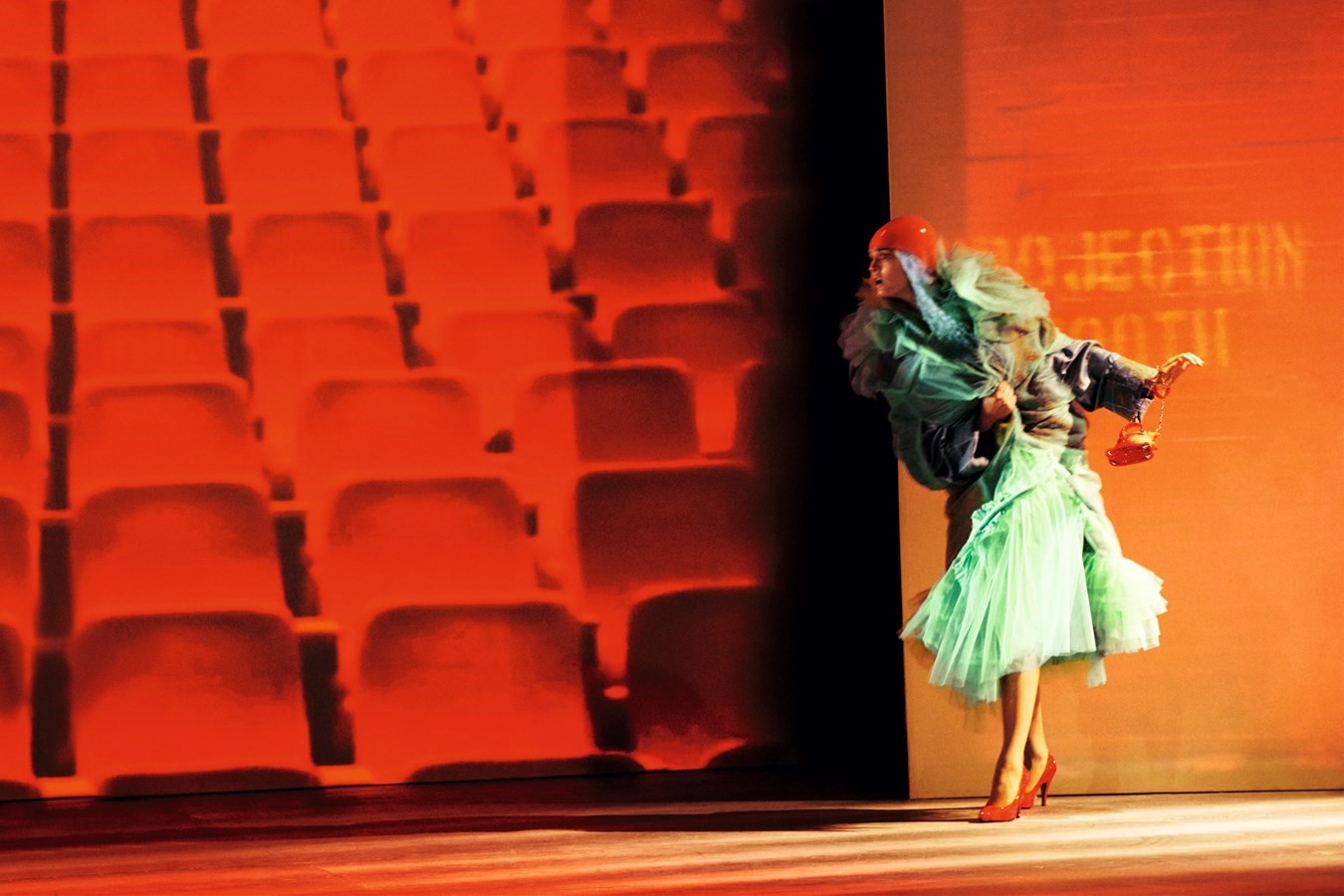
SF: There are so many echoes from the past in this performance – your professional past but also perhaps your personal past. Can you talk about that?
JG: As a dressmaker I am impacted by my own personal experiences, past and present, as well as the realities that unfold before my eyes. All these impressions are innately expressed in what I create, so if there are autobiographical elements to the story it’s because it’s driven by instinct.
SF: It feels all the more personal because of the reimagination of so many of your obsessions – Blanche DuBois, The Wizard of Oz, Cinderella, Pierrette, teddy boys, gunslingers, sailors, wicked stepmothers, zombies, nurses ... What is it about these characters that makes you want to revisit them?
JG: All these characters – these genres, these creations – exist within me. They are founded in memories and impressions that I express consciously or perhaps subconsciously. Sometimes they are communicated more heedfully than others, but they are always a part of my imagination.
SF: They are all, in entirely different ways, representative of otherness. Are you drawn to otherness?
JG: I am interested in spirituality and in finding ways of tapping into spirituality. It connects with ideas of instinctiveness and awareness, which are motivations and values I continue to draw on and express through my work at the maison.
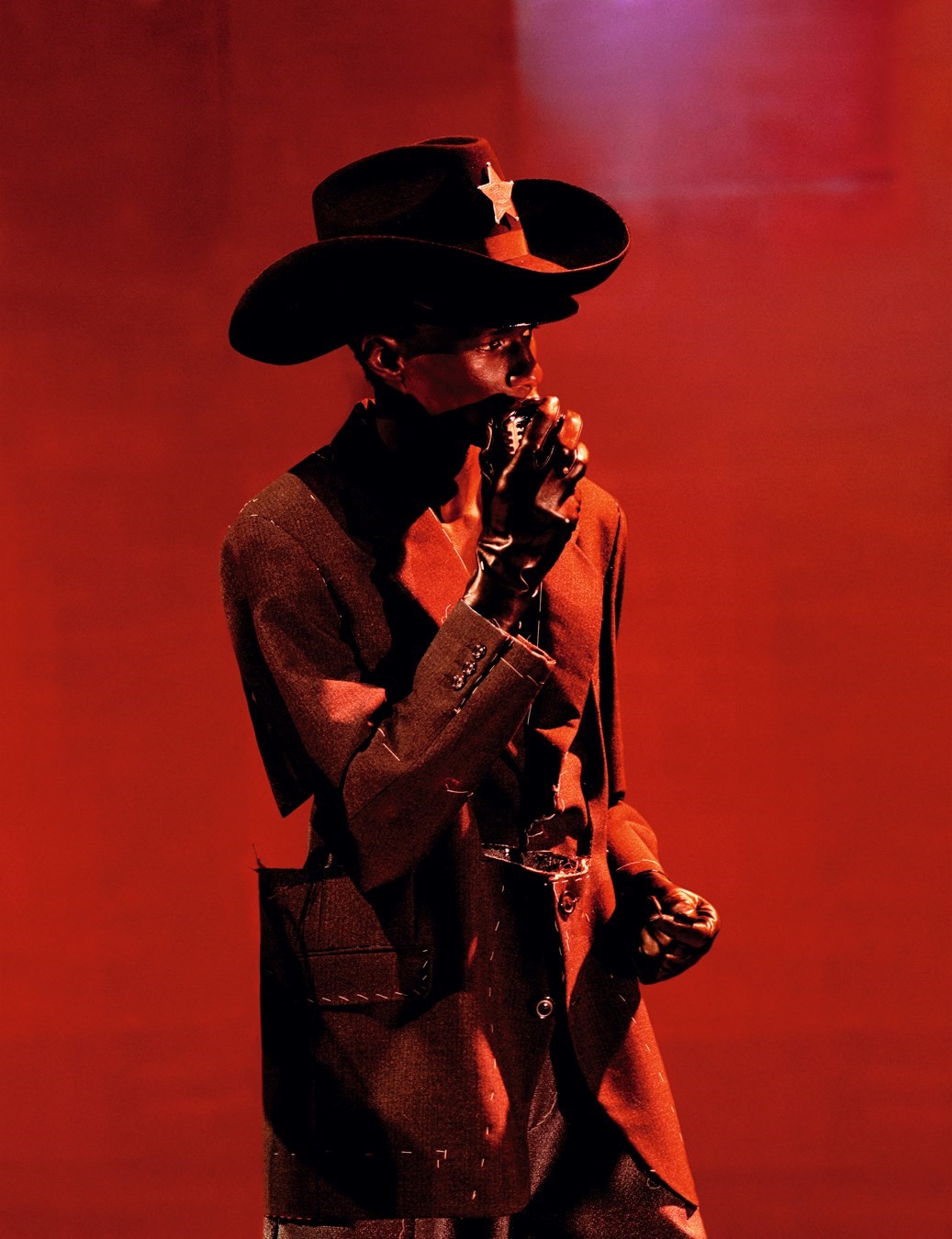
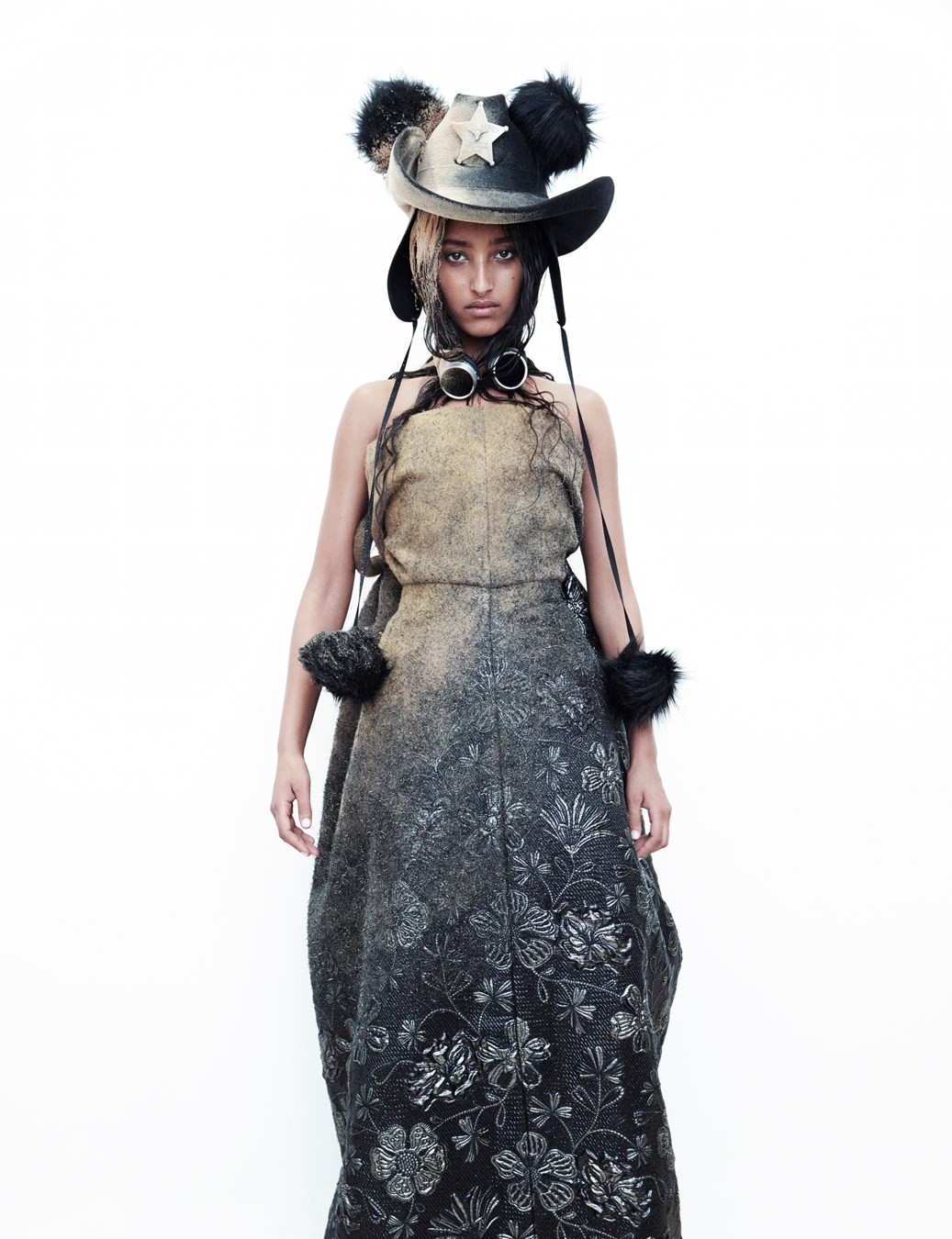
“The muses – the super-muses – are deeply personal choices. Their characters feed into the narrative and make it come to life during the creative process as well as the unveiling” – John Galliano
SF: You have always put one look on one model – you are one of the few designers to do that – which of course directs the emphasis on to character. Do you know who will wear the clothes while you are designing them?
JG: Yes, imagining which muse will be wearing the expression you’re working on often feeds into the symbiosis between dressmaking and storytelling.
SF: Can we talk about the casting, the amazing mix of supermodels you have cast in the past and your current casting ...
JG: The muses – the super-muses – are deeply personal choices. Their characters feed into the narrative and make it come to life during the creative process as well as the unveiling. They carry the shapes and volumes with authority. You develop a shorthand with them, a silent tongue through which you can communicate a silhouette through body language and gestures. I was taken with the dedication and craft of Leon Dame and Lulu Tenney and all the other muses who took part in Cinema Inferno. And I was happy to invite back the muses who have been there for pivotal points in my career and who have, likewise, actively taken part in my creative processes. They embody the story and inspire me to create. They are our community. Let’s hear it for the super-muses!
SF: Why is the past important to inform the present and the future?
JG: The memory of something leaves a trace of information, of know-how, of knowledge. I think all those things are integral to building a maison, or anything else for that matter.
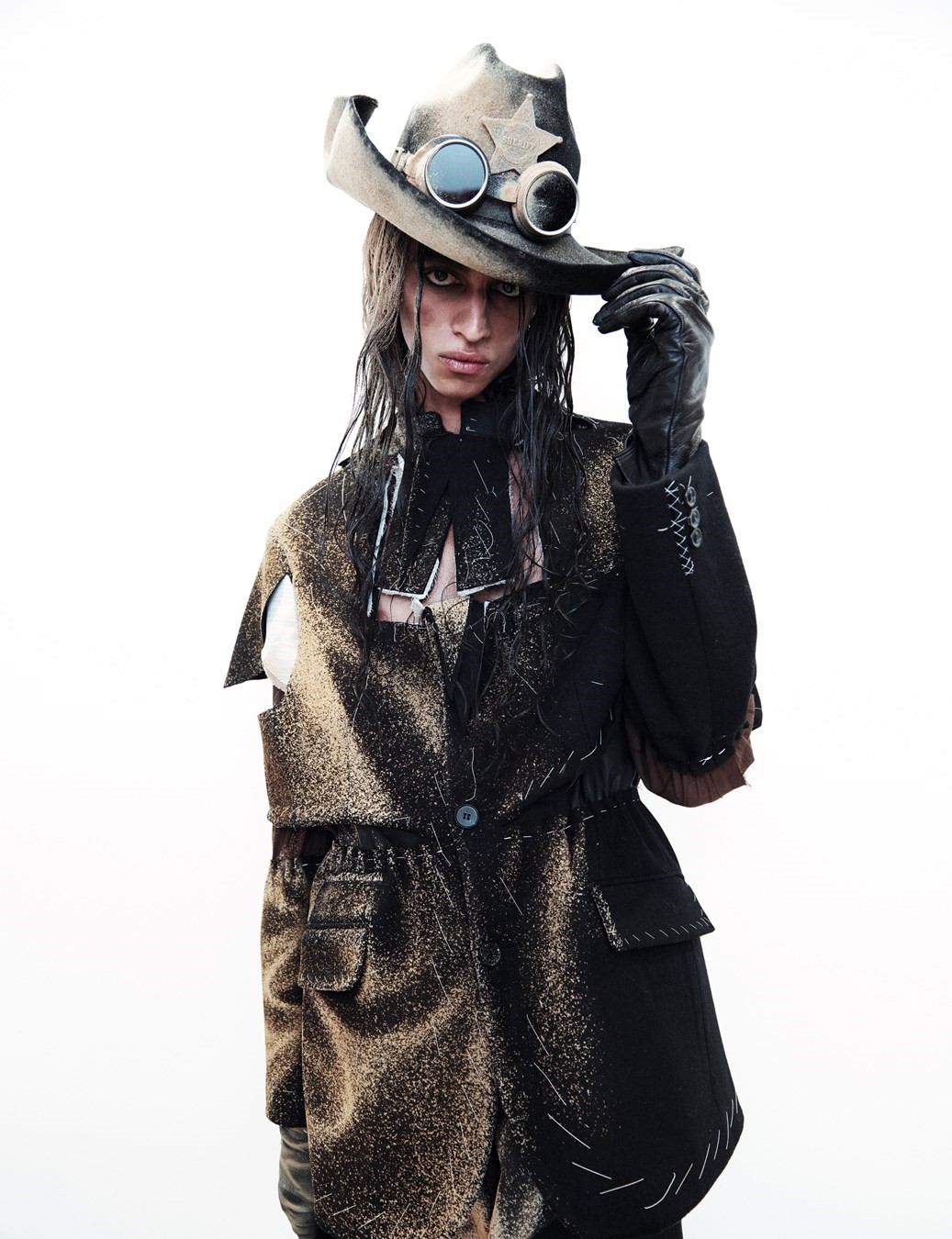
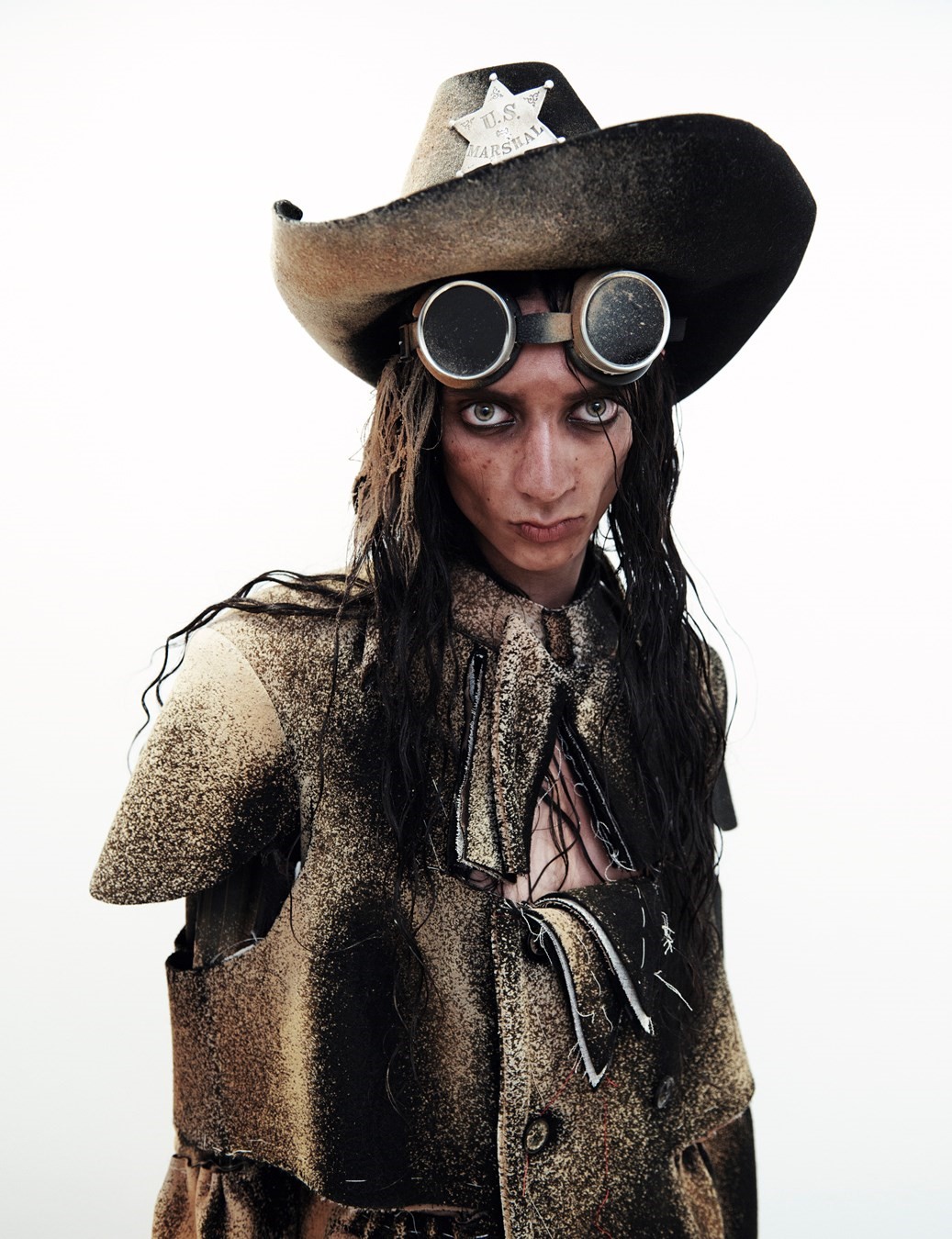
SF: Why did you choose to set the story in Southwestern US in the mid-Sixties? Why is that period interesting for you?
JG: The genre draws on literature and film related to the southern gothic style, which has its own associations when it comes to geography and time, but it isn’t about a specific period as much as it is a loop narrative that really transcends time. At the end of the story, Count and Hen realise they are stuck in an eternal loop, forever destined to relive the horrors of their past. Setting the story in the Arizona desert was a fragment of my own memory.
SF: Can we talk about the extraordinary sense of colour – canary yellow and violet, pale jade and blood red, coral and pistachio. Where does that come from, do you think? Is it something you are born with?
JG: The palette was informed by the work of Andrew Wyeth, a 20th-century realist who portrayed the American heartland. It triggered my own recollections of travelling through this dark, poetic scenery. In the flashbacks and dream sequences, of course, that changes. Those colours came from the realm of cinema.
SF: The guns, the blood, the sexual abuse, the alcohol ... In many ways it is all about taboos. We have talked before about the fact that there isn’t – and shouldn’t be – anything politically correct, or even political, about great fashion. Do you still believe that?
JG: This is make-believe, not reality. But to me these elements are not taboo. I believe we should have the ability to bring problems to the surface and face the world with consciousness and awareness. The imagery you mention is founded in concerns that are fundamentally challenging society today. The issue of gun violence has become a constant presence in our lives, and fashion is a reflection of our surroundings. Art evokes emotion. Only when things are brought to the surface can change begin to occur.
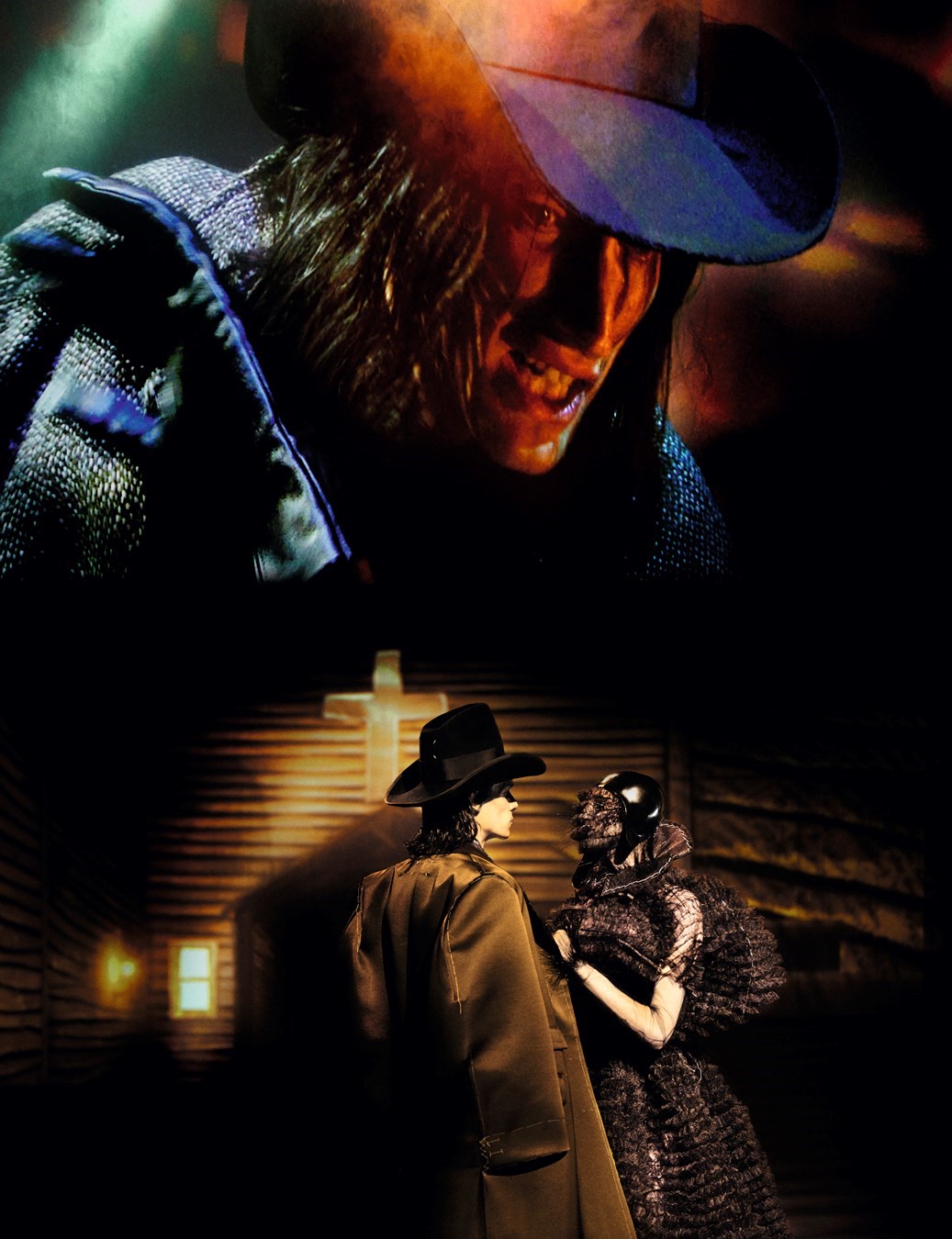
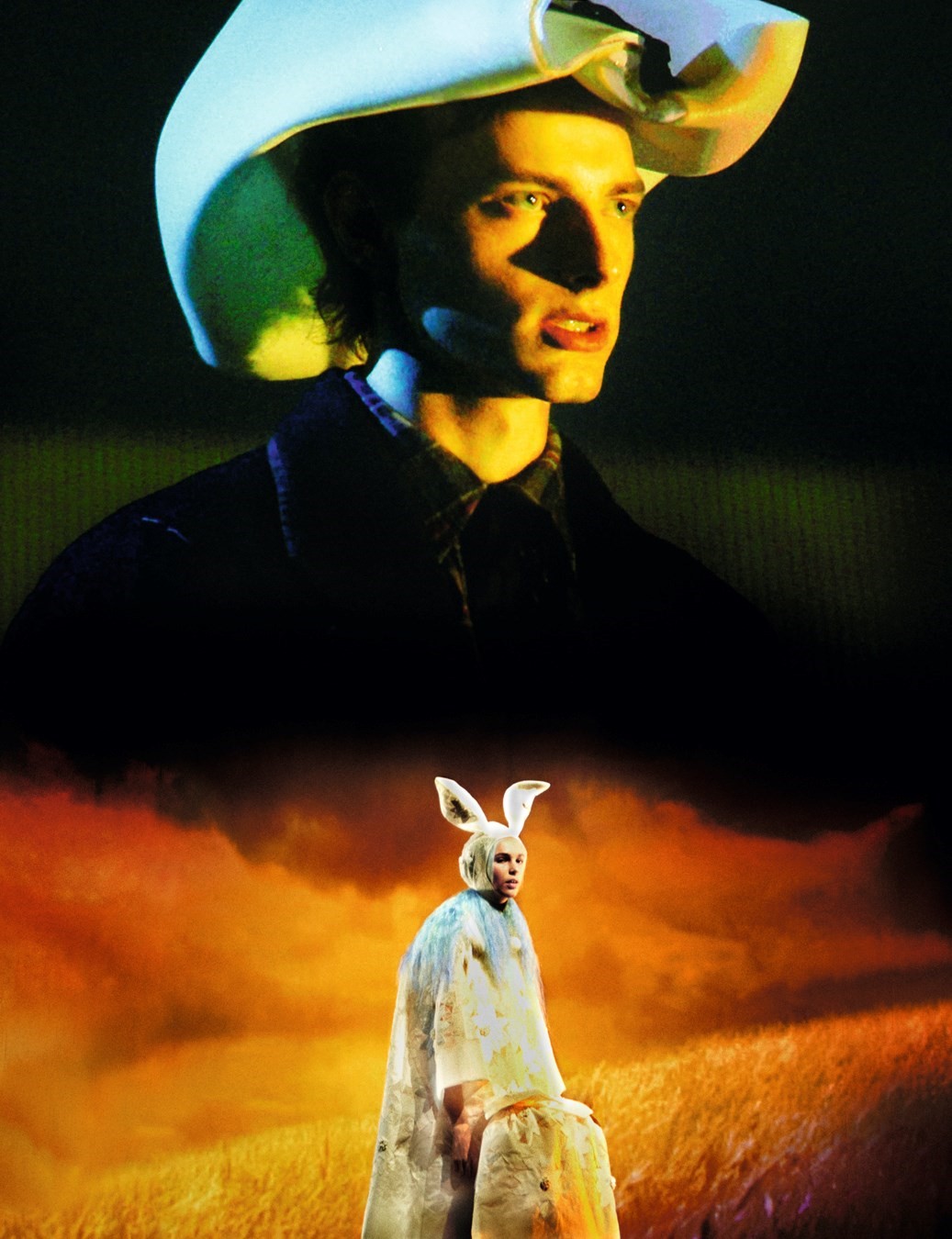
“It’s true that I always choose to amplify the truth in the matter. That’s important to me” – John Galliano
SF: Of course all the above is treated in a deliberately plastic way but still ... It feels brave in the current climate.
JG: I can only say that it comes from the heart, Susannah.
SF: You are so brave, always. Where do you get that from, do you think? And why is it important to be brave?
JG: It’s true that I always choose to amplify the truth in the matter. That’s important to me. But I wouldn’t relate the motifs of Cinema Inferno to taboo-breaking bravery because I don’t think they are, or should be, taboo. It’s a piece that reflects on patriarchal society’s many abuses of power through dressmaking and storytelling, amplifying – or highlighting – very real circumstances and conditions that affect us all. I think it’s important that we try to be conscious about these issues rather than labelling them as taboo.
SF: In the end, this performance is a love story. A romance. And the clothes are so, so romantic. Again, where does that come from?
JG: If the story is romantic, it’s a decidedly dark romance. I think the love story of Hen and Count is more a framework for the themes that play out within it – traumas of the past, the abuse of power, escape and the inescapable. Every motif is expressed within the garments and accessories themselves, in the power cut of the Spectral Cowboy looks – where I evoke the memory of Geneva bands [formal neckwear worn by lawyers and members of the clergy] – or the classic haute couture volumes imbued with the grammar of surgical scrubs, or different techniques applied to the prom and communal looks – such as essorage ageing and splicing – to evoke a sense of the unsettling. Where does it come from? From a desire to connect with the consciousness.
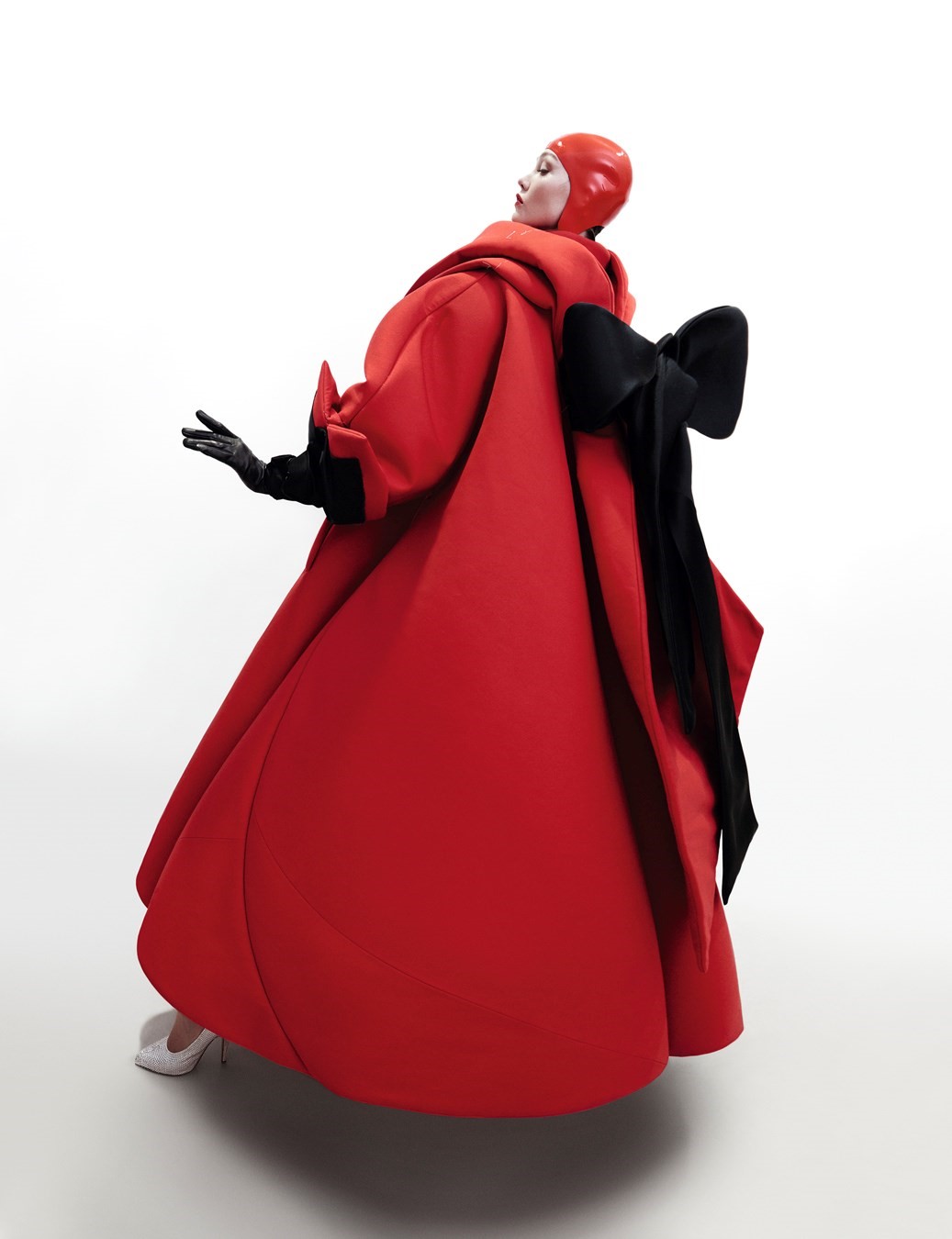
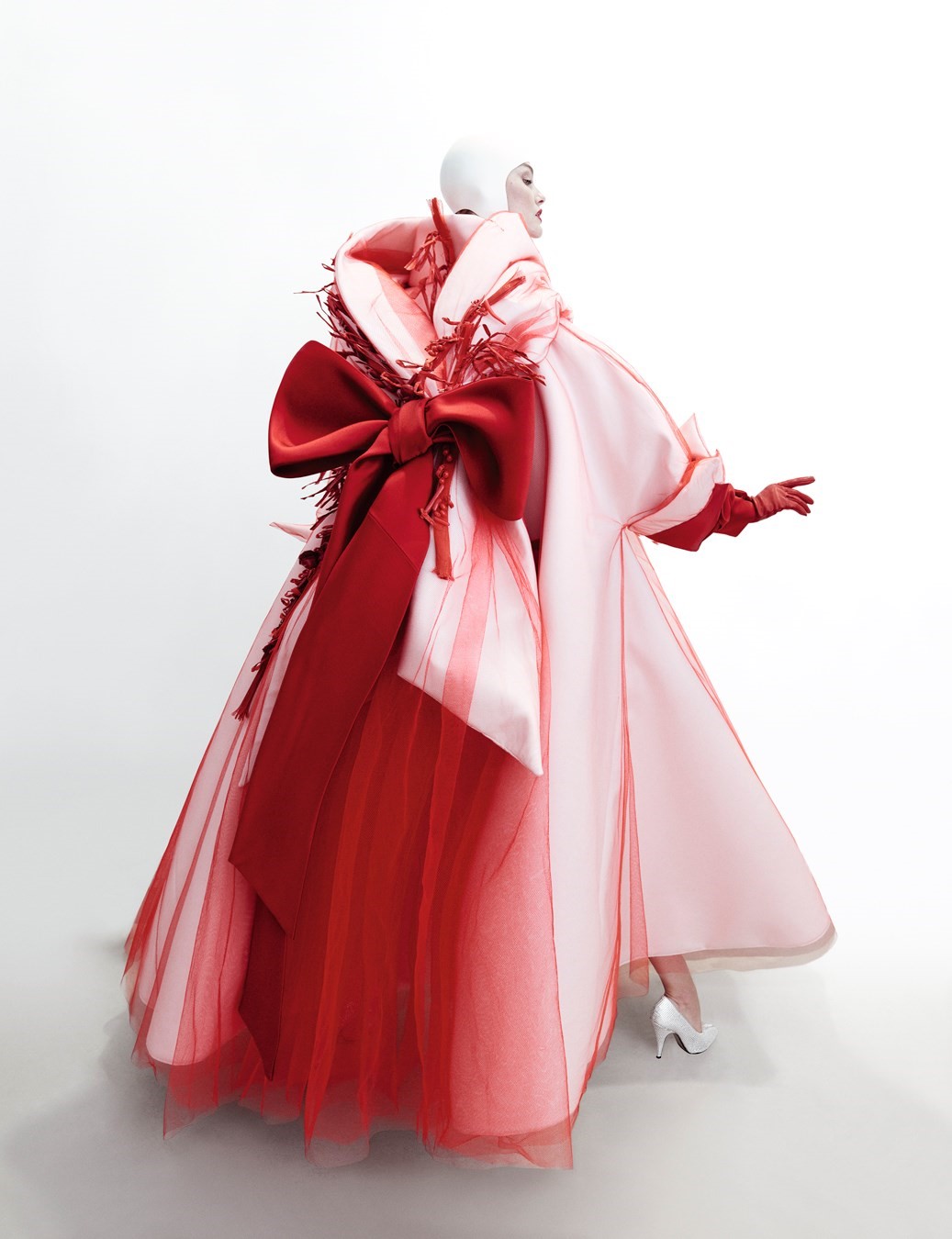
Show creative director: John Galliano. Show artistic director: Alexis Roche. Adapted for stage by Imitating the Dog. Hair: Eugene Souleiman at Streeters. Make-up: Dame Pat McGrath. Manicure: Elsa Deslandes at Majeureprod Agency. Muses: Konrad Bauer, Malick Bodian, Jan Krivdic and Thomas Riguelle at Success Models, Frederic Bittner, Peter Frackowiak and Moritz Thoma at Tomorrow Is Another Day, Kit Butler at Bananas Models, Valentine Charrasse, Anna Cleveland and Olga Sherer at Select Models, Elise Crombez, Karlie Kloss and Mona Tougaard at Elite Models, Leon Dame at Viva London, Karen Elson at CAA Fashion, Beauise Ferwerda at Platform Agency, Mateen Ismail at The Claw Models, Kate McNamara at Premium Models, Hannah Motler, Puck Schrover, Lulu Tenney and Caroline Trentini at Ford Models, Sherry Shi at IMG Models, Adrians Smats at The Bro Models and Amber Valletta at Women Management. Casting: Jess Hallett at Streeters. Photographic assistant: Romain Dubus. Post-production: Stéphane Virlogeux
This story features in the Autumn/Winter 2022 issue of AnOther Magazine, which is on sale internationally now. Buy a copy here.
